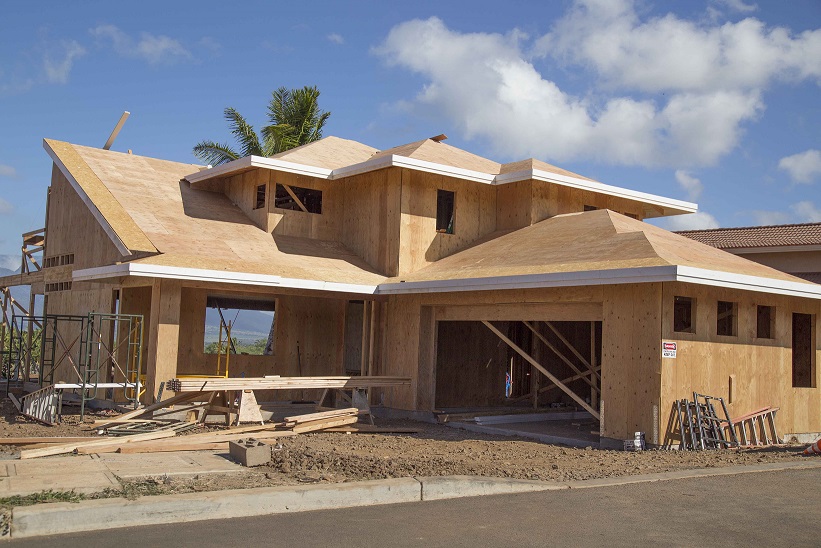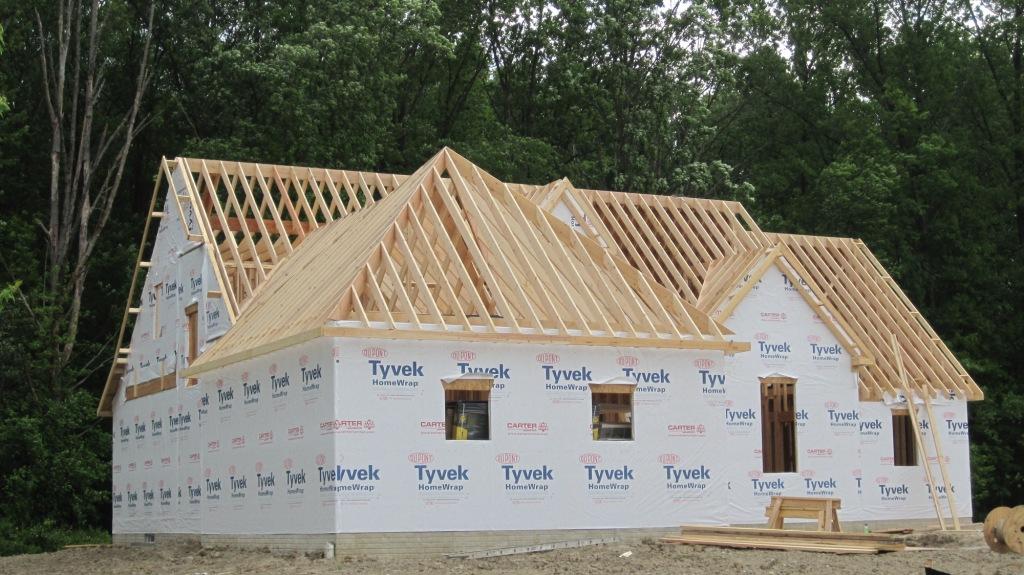Liquid Applied Housewrap Pros and Cons
0 Comments | Posted by armchairbuilder in Build Your Own Home, Great Products
We know how important it is to provide an air and moisture barrier to the exterior of homes built today. Not only does it keep rainwater and air from freely passing into the exterior walls of the home, but these barriers also allow any moisture trapped in the wall to get out. And by reducing air flow through the wall, it helps insulation perform to its intended R-value. One of the many options available to provide this barrier is liquid applied housewrap (a.k.a. weather resistant barrier, fluid applied air barrier, water resistive barrier…etc.). This product has been used for years in the commercial construction industry but the question remains, is it practical for residential construction?
Pros for Liquid Applied Housewrap
Seamless Installation – One of the huge benefits to using a liquid applied housewrap is the seamless barrier it provides. Unlike traditional plastic housewrap that come on a roll, the liquid product creates one solid layer that prevents moisture and air penetration. Most of the products available that come on a roll leave seams that require taping to form a continuous barrier.
Vapor Permeability – Much like plastic housewap that comes on a roll, the liquid applied version allows any moisture inside the exterior wall to pass through to the outside…which is essential to prevent mold and material degradation in the exterior wall.
Durability During Construction – One of the negatives associated with traditional plastic housewrap is the potential for it to tear after installation. The product that comes on a roll is fastened to the exterior of the wall with nails or staples and in high winds can tear off. Remember, months can pass between the installation of the weather barrier and when the final siding goes up. With liquid applied housewrap, this isn’t a problem.
Fewer Penetrations – Because liquid applied housewrap is sprayed on (or rolled), no fasteners are required to secure it to the house. With traditional housewrap that comes on a roll, fasteners are used which must penetrate the material to secure it to the wall. This creates potential leak spots that you won’t have with the liquid applied housewrap.
Cons for Liquid Applied Housewrap
Cost – Installation of liquid applied housewrap is more tedious and time consuming than traditional materials. Most manufacturers require seams in the exterior wall surface to be filled first with a special product prior to applying the liquid. Then the liquid is either rolled or sprayed onto all exterior surfaces. Because of the extra time involved, the installation of liquid applied housewrap can cost two to three times that of traditional housewrap from a roll.
Temperature – Some of the manufacturers of liquid applied housewrap require temperatures to be at least 25 degrees far. for installation (Dupont requires a minimum of 25 degrees) . There are also some very specific storing guidelines for each product, depending on the manufacturer. Tremco’s Enviro-Dri must be stored at a temperature at or above 50 degrees Far.
Safety – These liquids can pose a hazard to those working on the job site so it’s important that personal protective equipment be used during application. Coveralls, gloves and face shields are used to protect the applicators because these products can create a problem if they come into contact with skin, eyes, hair…etc. So it’s important to read the manufacturers directions carefully for safety recommendations.
Clean Surface – All liquid applied housewrap manufacturers state that the exterior wall surface must be free from dirt or other foreign debris prior to application. Because a new home is located in a dirty area, this will typically require an additional step to clean the wall prior to application.
Rain – Most liquid applied housewraps must be kept dry for a period of time during the initial curing period. If rain does come too soon, the new material must be protected from the weather…which can be a problem when a whole house has been just applied.
Exposure Time – These liquid applied housewraps must be covered with siding within a certain amount of time to prevent damage from the sun’s UV rays. This is similar to traditional housewraps so make sure you check manufacturer specifications to make certain the schedule coincides with the manufacturer recommendations.
Thickness of Application – The liquid must be applied to a specific thickness according to manufacturers recommendations. Apply the material too thin, and there could be a breach in the surface that causes leaks. Apply the material too thick, and it may not cure properly. Installation contractors must have the proper tools and experience to check and apply the material to strict manufacturer requirements.
Windows and Doors
Windows and doors are notorious for causing leaks in a home. So, it’s important to include proper sealing techniques to the trade contracts to build a new home. The best option available is to have the company that applies the liquid applied housewrap also seal up the window and door openings if possible. This will eliminate finger pointing if something goes wrong.



